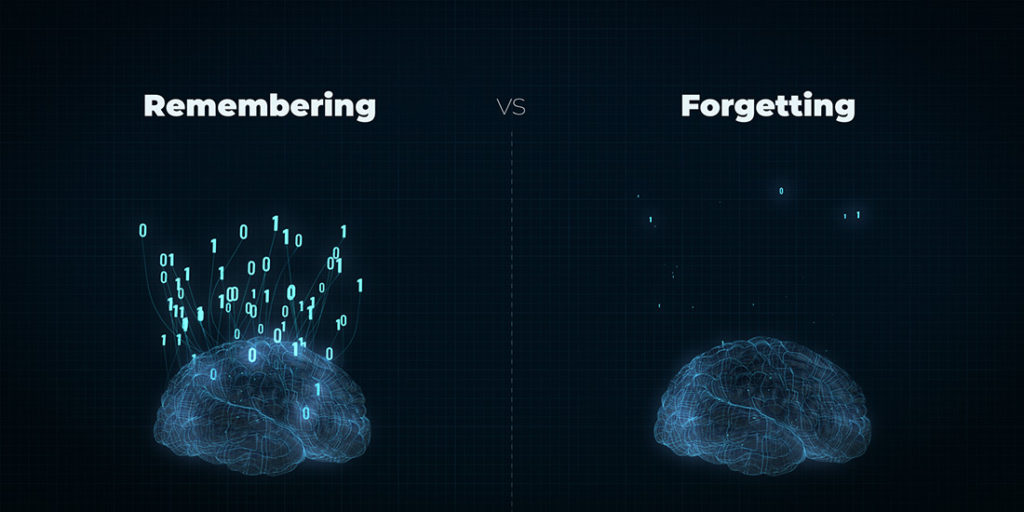
I followed each step without a problem. The video tutorial was engaging, and the techniques shown were useful. It was easy to follow along, and it was fun. I thought I’d be able to apply it directly to my work and possibly use it in my upcoming project. I had just landed a new client that could potentially bring in a lot of work. And it would be the kind of work I want to do.
About a week later, the new project started. I knew from the outset that I wanted to incorporate the techniques I’d seen in the tutorial a few days ago. I fired up the application and waited for inspiration to swoop in. And then…, nothing. In fact, I didn’t even know how to start. What had seemed so logical, so fluent, just a few days ago, was completely gone. I tried a few things, but nothing worked. It was as if I hadn’t even watched the tutorial in the first place.
Why do you forget what you learn in tutorials, and how can you remember them better?
Our brain’s primary focus is on surviving, not remembering new things. Unless the new information is vital to our survival, we quickly forget it. It would be exhausting to take in and process all the information we encounter, so instead, the brain automatically sorts what information is essential and what is not. You can test this for yourself. Think of your way to work, school, your local store, or some other location you go to regularly. What are the colors of the buildings that you always pass, or what does it say on the store signs? Where are the fire extinguishers located in the office? And so on. Most likely you’ll have a vague idea, but you won’t know the details. Although you see them all the time, you won’t remember.
So if seeing things frequently doesn’t make us remember, what will?
You have an advantage when you’re watching tutorials. You’re focused, and you are actively taking in the information. You want to learn it. Your attention goes to the task at hand. This effort alone, though, won’t get you far enough. After you stop watching, the forgetting starts to set in. But let’s take a more deliberate approach so that the new knowledge can sink in deeper.
When you’re watching a tutorial, here are some things you can do to remember it better.
- Change your mindset from passive to active. Make it your goal to transform the information provided into your own.
- Take notes. It may seem obvious, but how often do you do it? We are creatures of habits. If you force yourself to take notes, it’ll start a new habit, and soon you’ll be doing it without thinking about it.
- If you get to see the final result of the tutorial, pause the video and try to figure out how you would do it yourself without any help. It doesn’t matter if you’re right or wrong. The mere act of thinking it through will help you remember it better.
- Regularly pause the video before each new step and ask: Why are we doing this step? Could it potentially be done another way? Is there a past project I could have used it on? New knowledge latches on to old knowledge, so make as many associations as possible to your work.
- Are there other similar techniques that you already know? What are the similarities, and what are the differences?
Why shouldn’t you follow along with the tutorial step by step?
To make the techniques in the tutorials your own, to improve and expand upon them, you have to practice them, not just watch them. It’s tempting to follow along with the instructor, pause the video after each step, and copy what the instructor just did. Don’t take that bait though. If you do it that way, you’ll only be pulling information from your short-term memory. It’s deceptive, cause it feels like you’re learning a lot. But unless you practice the steps again at a later time, you’ll forget most of them.
Let some time pass between the tutorial and your practice.
A much more successful approach is by recalling, or retrieving the information after some time has passed. Actively retrieving memories from the brain strengthens the connection to the memory, and we can remember it more easily the next time. Another way to enhance the connection is by adding some difficulty. If it’s difficult to retrieve, that extra effort will create a stronger memory. If it’s too difficult we won’t remember at all, so don’t wait a year, but try to practice the next day, for example. This approach will allow you to build long-term learning, and the techniques will become your own.
Conclusion
There’s more online training on the internet than ever before. From paid comprehensive courses to free tutorials, there are numerous recourses available. While there’s nothing wrong with watching video tutorials “movie-style,” it’s important to understand that it is a very ineffective way to learn. Science has come a long way in understanding how we learn. By using some proven techniques and approaches, you can maximize your learning, your skills, and your career.
If you want to know more about effective learning, I highly recommend you check out Make it Stick – The Science of Successful Learning.
Sidenote – Not an affiliate link!
